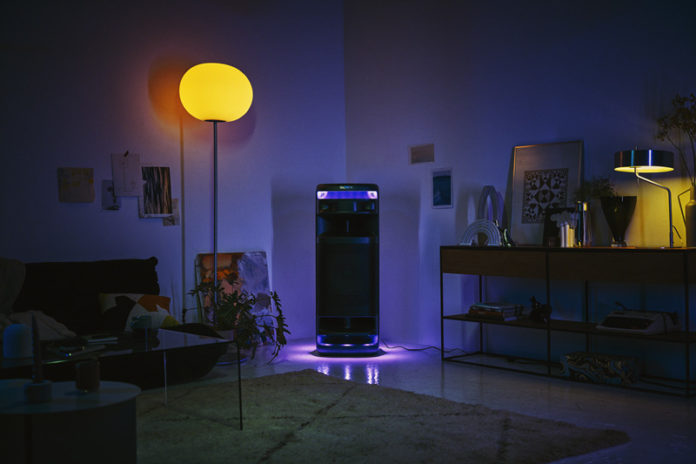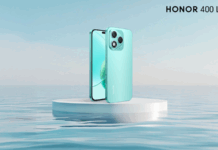Sustainability is no longer a buzzword but a necessity in today’s world. As electronic devices flood the market, the growing mountain of electronic waste has become a critical issue. With World Sustainability Day coming up on the 23rd of October, the consumer electronics industry is facing increasing pressure to reduce its environmental impact. In South Africa, a significant milestone was recently reached when President Cyril Ramaphosa signed the Climate Change Act into law. This move signalled the country’s first major step towards preserving South Africa’s environmental future.
Consumer electronics giant, Sony, a pioneer in the industry, is also taking steps. The company has long recognised the importance of sustainability and has been taking action since the 1970s. Now, through its comprehensive “Road to Zero” plan and other innovative strategies, Sony is demonstrating that it is possible to balance cutting-edge technology with eco-conscious practices, making sustainability a core priority across its operations.
Shifting Toward Eco-Conscious Tech
The demand for new gadgets has skyrocketed, and so has the pressure to make them more eco-friendly. The Global E-waste Monitor found that by 2022, the world generated 62 billion kg of e-waste or an average of 7.8 kg per capita. Addressing this challenge means reimagining the lifecycle of consumer electronics—from raw materials to product disposal.
This movement isn’t about making token efforts; it’s about deep, systemic change. Efforts to reduce virgin plastic usage, improve energy efficiency, and utilise recycled materials are becoming the new normal. A shift toward circular economies is also gaining momentum, where materials from older devices are recycled, reused, and reintegrated into newer products.
Sony’s Longstanding Commitment to Sustainability
Sony’s environmental initiatives date back to the 1970s. The early 1990s saw the company begin to set formal environmental principles and targets and in 2010, Sony launched “Road to Zero”. This is plan is a comprehensive strategy aimed at achieving a zero environmental footprint by 2050. The strategy covers the entire lifecycle of Sony’s products, from material sourcing to production, energy use, and disposal. In 2022, Sony announced an accelerated timeline, aiming to achieve a zero environmental footprint in the climate change area by 2040—ten years earlier than initially planned.
Sony’s efforts to reduce its environmental impact are guided by Green Management 2025, which sets medium-term environmental targets. By 2030, the company aims to switch to 100% renewable energy for electricity used at its business sites, with the goal of achieving net-zero greenhouse gas (GHG) emissions in scopes 1 and 2 by the same year. Additionally, Sony plans to reduce scope 3 GHG emissions—those generated during product use—by 45% by 2035 (compared to 2018 levels).
Pioneering New Materials and Practices
One of Sony’s most remarkable achievements in sustainability is the development of SORPLAS, a proprietary recycled plastic made from water bottles and waste optical discs. Unlike conventional plastics, SORPLAS maintains its quality through multiple recycling cycles, making it a key component of Sony’s circular economy approach. SORPLAS is used extensively in Sony’s products, including the BRAVIA lineup of televisions, where it accounts for up to 65% of the total plastic used in the back cover—the largest plastic component of the TV.
The new ULT POWER SOUND series also reflects Sony’s commitment to reducing environmental impact. These products incorporate recycled plastic components, demonstrating that powerful sound systems can be both eco-conscious and innovative. By integrating recycled materials across its product lines, Sony is reducing the need for virgin plastics, significantly lowering its environmental footprint.
Energy Efficiency: BRAVIA and Gaming Monitors
Energy consumption is another critical area where Sony has made strides. The latest BRAVIA 7 and 9 series televisions feature advanced signal processing technology that optimises brightness for each scene while maintaining low power consumption. This energy efficiency is complemented by the Eco Dashboard, a tool that allows users to manage energy-saving settings and monitor their power usage. This combination of high-performance technology and eco-conscious design ensures that BRAVIA TVs deliver stunning visuals while reducing energy consumption.
Sony’s commitment to sustainability includes its gaming products as well. The newly launched INZONE M10S and INZONE M9 II gaming monitors are designed with the environment in mind. The INZONE M10S avoids the use of moulded foam cushions in its packaging and features a low-power consumption mode, making it both durable and eco-friendly. These innovations ensure that even high-performance gaming products align with Sony’s sustainability goals.
Pushing Boundaries with Circular Economies
The shift toward circular economies is crucial for reducing the environmental impact of consumer electronics. By using materials that can be recycled repeatedly without degradation, companies like Sony are extending the lifespan of resources that would otherwise end up in landfills. These circular strategies not only reduce waste but also decrease the demand for new raw materials. As a result, the tech industry is beginning to close the loop—transforming waste into value.
Looking to the Future: Green Management 2025 and Beyond
Sony’s Green Management 2025 plan sets the foundation for its medium-term environmental targets. Between 2021 and 2025, the company is prioritising collaboration with business partners, consumers, and stakeholders to build a more sustainable world. The aim is to switch to 100% renewable energy for electricity at its business sites by 2030, further reducing its environmental impact. By 2040, Sony plans to achieve net-zero GHG emissions across all scopes, positioning itself as a leader in sustainability within the consumer electronics industry.
Looking Ahead: Green by Design
What makes the sustainability efforts in consumer electronics particularly promising is their long-term vision. Sony’s “Road to Zero” initiative, which aims to eliminate environmental footprints entirely by 2040, is a bold plan that guides not just product design, but the entire lifecycle of electronics. Every five years, new targets are set, focusing on climate change, resource efficiency, and biodiversity protection.
As consumers increasingly prioritise eco-conscious choices, it’s clear that the demand for sustainable technology will only continue to grow. The steps being taken today are laying the groundwork for a future where technology is not just smarter and faster, but also kinder to the planet.
Article Provided




























